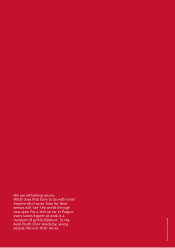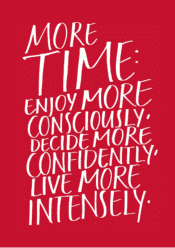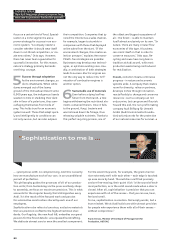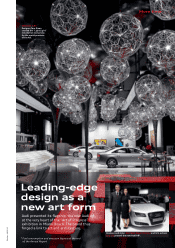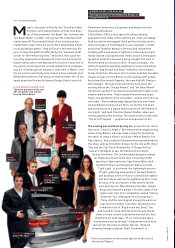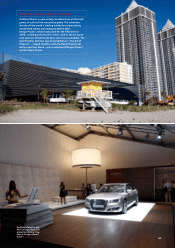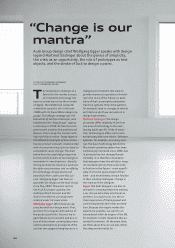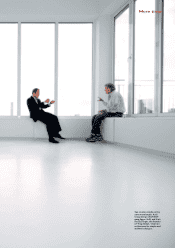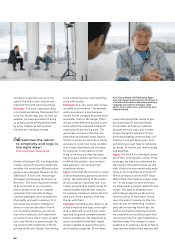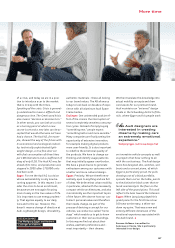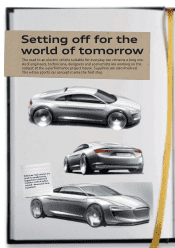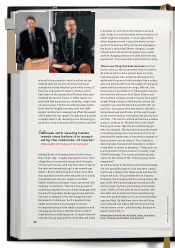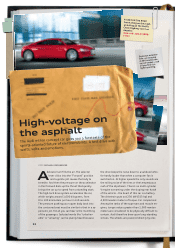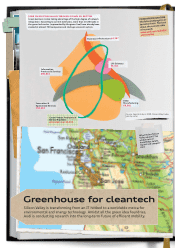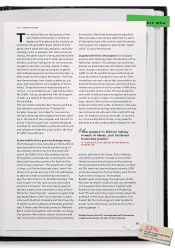Audi 2009 Annual Report Download - page 89
Download and view the complete annual report
Please find page 89 of the 2009 Audi annual report below. You can navigate through the pages in the report by either clicking on the pages listed below, or by using the keyword search tool below to find specific information within the annual report.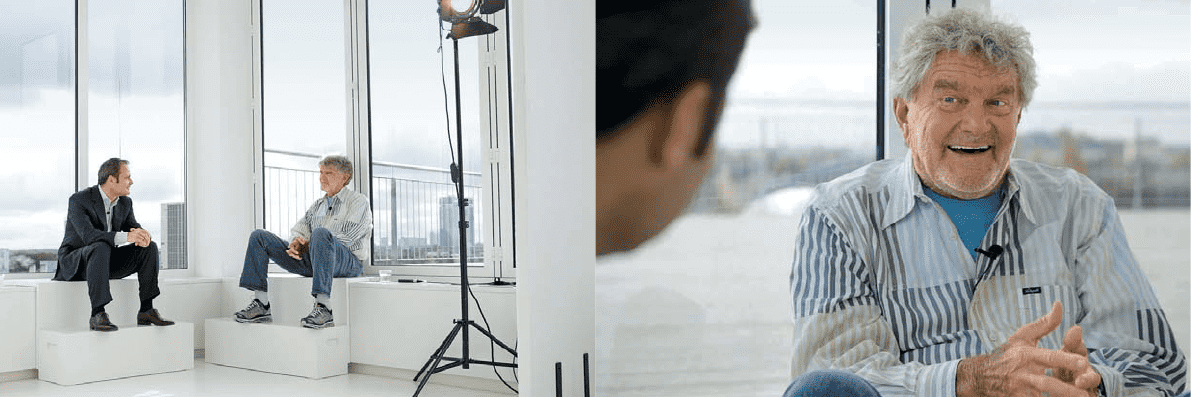
86
oped a telephone that reacts to ges-
tures and specific hand and finger
movements. At first our customer
thought we were crazy, but in tests
people thought it was great. If you
are always making compromises, ulti-
mately no one will believe you. And
sometimes you just have to risk going
for broke. To do this, you need courage
and expertise.
Egger: The Audi A1 is a fantastic exam-
ple of this. Looking back in time: Three
years ago, we had a very advanced de-
sign study in the pipeline that we still
didn’t find to be very emotionally satis-
fying, so we presented an entirely dif-
ferent concept car at the 2007 Tokyo
Motor Show: the “Audi A1 project quat-
tro.” As we always do with showcars,
we observed how people reacted to the
model. This gave us feedback as to
which design aspects we should con-
tinue to pursue in the future. In any
case, the public’s reaction to the con-
cept car was overwhelming. Immedi-
ately after returning from Tokyo, we
held an emergency meeting at which
we completely revised the project and
converted it into the new model that is
familiar today. This change in course
enabled us to develop a sense of future
requirements before there was any talk
Audi Group design chief Wolfgang Egger
met with design legend Hartmut Esslinger in
a Munich loft to discuss the future of design
language and creative strategies. Both
agree: Less is often more, and only the best
is good enough.
to do with democracy, and everything
to do with quality.
Esslinger: As a rule, every new compa-
ny starts out innovative – for example
with a new idea or a new business
model. As the company becomes more
successful, there is the danger that it
will go on the defensive and try to pre-
serve what it has achieved instead of
continuing its pioneering work. The
worst-case scenario is that the com-
pany ends up being all about figures
and is run purely by controllers. As far
as luxury is concerned, I also consider
it an illusion that there can be luxury
for everyone. In my opinion, some-
thing is not luxury unless the buyer
has to make a certain sacrifice in order
to afford the product – but can then
take pleasure in an exclusive and
exceptional object.
Egger: I feel that the premium concept
is best embodied by plainness and sim-
plicity. The authenticity of the materi-
als also plays an important role. Cus-
tomers are willing to spend money for
natural leather tanned with rhubarb,
for example, because it allows them to
take a bit of their quality of life into
the car with them.
Esslinger: Sometimes the return to ab-
solute simplicity and logic is the right
step. A keyboard on which you could
type had long been considered essen-
tial for a telephone. Yet people are so
much more skilled with their hands
and are capable of playing the piano
and creating sculptures. So we devel-
concepts to save fuel and, as in the
case of the Audi e-tron, how we can
represent this with electrical energy.
Esslinger: The most important thing
is to create something that people find
to be fun. By the way, you can find out
whether you have succeeded in doing
so as early as the development phase
by using children as test persons:
Children are ruthlessly honest.
Hartmut Esslinger, 65, has shaped the
modern world of consumer goods like
no other. His more than 40 years of ex-
perience as a designer flowed into the
2009 book “A Fine Line: How Design
Strategies Are Shaping the Future of
Business.” The most important theses:
To be successful as an innovative
brand, design must be an integral
component of corporate strategy.
Creative strategies must be prepared
thoroughly and well in advance. It is
also necessary to form strategic re-
serves in case an idea doesn’t work
out. Generally speaking, you should
learn from setbacks, and adaptation
can prove to be a clever move. In addi-
tion, only the best is good enough. Be-
ing content with mediocrity is the be-
ginning of the end. Design has nothing
“
Sometimes the return
to simplicity and logic is
the right step.”
Hartmut Esslinger, design legend


